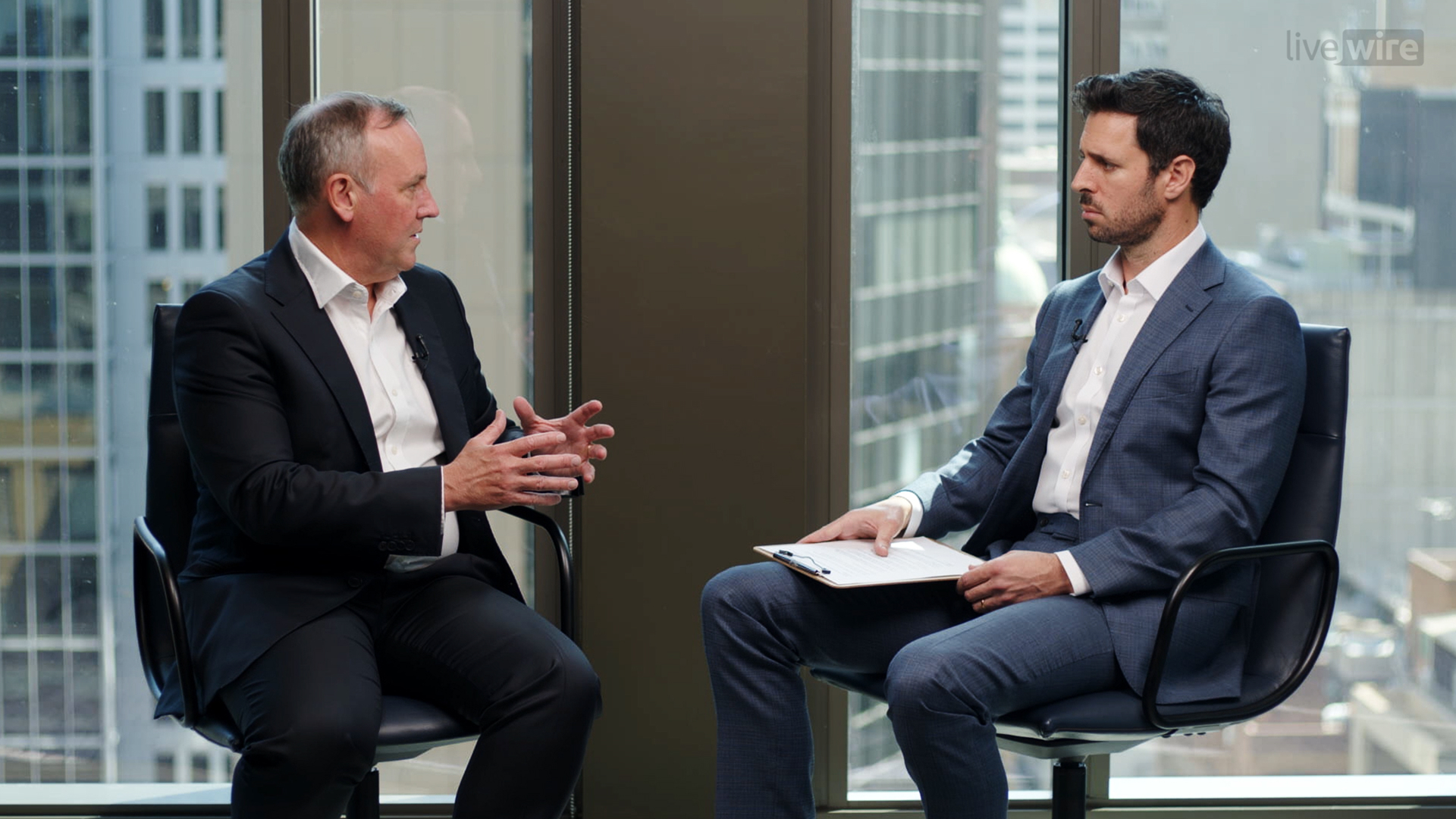Metrics' Andrew Lockhart on where real estate debt fits in your portfolio
At a time where seemingly everything is in a bull market, thoughts inevitably turn to what happens next and how to best position yourself.
It's why private debt remains a compelling opportunity, even while stocks and gold soar to new highs, says Andrew Lockhart, managing partner at Metrics.
This interview was filmed on 22 October 2025.
"In an environment where markets are toppy, a lot of investors might be thinking about how do they protect [themselves] to the downside," says Lockhart. "And a move into private debt or private credit is a way in which people can look to gain greater stability and protection of their capital through appropriately-structured debt investments."

Ultimately, it's about what point of difference the sector can offer investors.
"What investors are looking for is how private credit can work in a portfolio," says Lockhart. "There's always a role for both defensive and growth investments. So private credit, particularly private credit in real estate-related investments, in well-diversified portfolios can deliver for investors as part of their defensive portfolio allocation."
And it's those advantages that are cutting through with investors, especially in an asset class as well understood as real estate.
"People in Australia have always been familiar with real estate, and I think we have an affinity with real estate."
"I think the general perception of investors is that they like the attractive features of the stability of capital and the attractive income that can be generated from private credit in real estate-related investments," says Lockhart. "But I think there's also this element of nervousness around what they don't necessarily know or understand."
Mitigating the risks
But for investors worried about a correction or downturn, the local private credit market has been robust, and lenders can take certain steps to mitigate other risks, especially in real estate.
"If you look at the Australian market, historically, the loss rates that have been experienced in Australian direct lending have been negligible," said Lockhart. "I go back to the time of the global financial crisis, and the banks reported peak net write-offs of about 0.67 of 1%."
"One of the things that's important as a lender is understanding the capital structure and where you are exposed to risk. And so as a lender, equity is obviously the higher-risk part of the capital structure."
"People are generally investing in equity to gain the benefit of growth in earnings and value. You're investing in debt to gain the protection of the capital structure and where you sit. So first position in terms of the defensive nature of the asset class is the risk to equity or the asset owner."
"As a lender, you then also want to protect your position through appropriate terms, conditions, covenants, and security. So one of the benefits of private debt in real estate is the fact that it's asset-backed exposure, so you've got security over the property that you might be lending against."
Two areas of focus
As is often the case, structural and cyclical forces are driving the opportunities in real estate.
"The two areas where we most focus has been in residential markets and in industrial markets. That's largely to do with the significant growth and demand for residential property. We are very active in terms of residential high-density apartments and also large-scale land subdivisions. If you look at what's driving that, a lot of that is about population growth."
It's a simple tailwind that's hard to ignore, says Lockhart.
"You only need to look at the forecasts out to 2050 in terms of population growth in Australia and the growth of our economy that will drive increased demand for residential property. You've seen changes in terms of the way in which our cities are formed with higher density around transport zones and public infrastructure like the Metro and Sydney."
It's given Metrics and private credit funds a "real role" to play in providing financing, and where Lockhart sees the opportunity is in projects where the source of repayment is the eventual sale of the asset, such as apartments.
But he's also quick to point out that it's not a "one-size-fits-all" market. An industrial property in Brisbane will have a completely different risk and return profile from even a similar site in Sydney.
A different diversification
Lockhart says diversification is also paramount, not only in terms of portfolios, but in terms of the type of projects Metrics will finance.
"When I think about project financing, say in a residential development, you're looking at what is the market risk," he says. That means considering a huge range of potential risk factors from zoning and approvals, to saleability and yield, and even the contractors and subcontractors doing the work.
"You can gain greater protection for investors' capital by having appropriately diversified portfolios. You don't want to have exposure to any one individual borrower or counterparty to an extent that if you were to have a situation where the borrower underperformed, you're not necessarily putting a significant portion of your capital at risk."
"Diversification is critical, but not for the sake of just diversifying a portfolio."
Why Metrics target short-term exposure
In terms of what they're looking to avoid, it's idiosyncratic risks and long-dated exposure.
"We've tended to stay away from areas where you've got more specialised risk," said Lockhart. "We came into the pandemic period with no exposure to commercial office at all. We've had very limited exposure to retail."
"From our perspective as a lender, what we prefer is short-dated exposures, where on completion of the project, the property is sold and that provides for repayment. And having shorter-dated exposures, in our view, lowers risk for investors. It lowers your credit risk. You're involved in lending money for shorter periods of time, it reduces the market risk."
"If credit spreads and market conditions change, you've got less exposure to that. But it also drives that opportunity to recycle your capital and that can increase the liquidity available for investors in our funds."

3 topics
1 stock mentioned
1 fund mentioned
1 contributor mentioned


